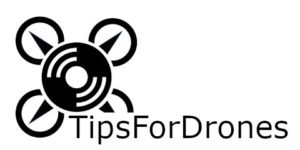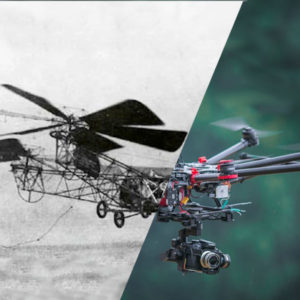What is the history of drones? The history of drones is vast and exciting, from its creation in 1907 to its inception in World War 1 and 2. Drones have advanced quickly through modern technology with many milestones along the way. They are primarily used for military operations but are currently gaining popularity in both the commercial and recreational industry as well as civilian sectors of society.
Drones are gaining popularity at a rapid rate these days. With advancing technology, it seems there is an endless need for this high-flying device both commercially and recreationally. The history of drones is vast and exciting, from its creation in 1907 to its inception in World War 1 and 2.
Drones have advanced quickly through modern technology with many milestones along the way. They are primarily used for military operations but are currently gaining popularity in both the commercial and recreational industry as well as civilian sectors of society.
Now that you know the basic history of drones, let’s continue to explore this topic in more detail below. We will discuss the milestones you need to know including who made the first drone, what the first armed drone was, how drones were used in both World War 1 and World War 2, who developed the first military drone, how military drones are used and classified, how the taxi drone was invented, how drones are advancing in both the commercial and recreational industry, etc.
So, if you’re ready to learn more about the history of drones and the milestones paving the way for these unmanned aircrafts, then let’s get started!
How did the Drone Get Its Name?
The word ‘drone’ was adopted from the bee definition in reference to the first remotely-piloted aircrafts used for battleship target practice in the military. The term ‘drone’ was coined in honor of the mother or ‘queen’ bee. The term fit as drones can only fly if controlled by an operator on the ground or in the ‘mother’ airplane. It was first used with the Fairey Queen aerial vehicle in the 1920’s and later with Havilland Queen Bee target aircraft in the 1930’s.
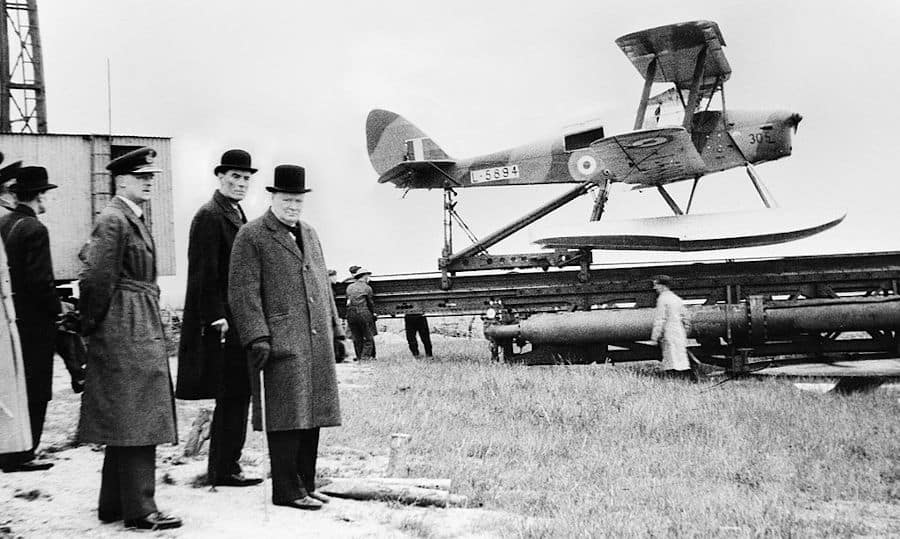
Figure 1: Winston Churchill and the Secretary of State for War waiting to see the launch of a de Havilland Queen Bee radio-controlled target drone, 6 June 1941
The Beginning of Drones
In July 1849, the earliest known recording of an unmanned aerial vehicle being used in warfare was the Austrian incendiary balloon attack on Venice. Around 200 balloons (each carrying a 25 to 30 pound bomb) were launched from land and then dropped onto the city using a time fuse. The marked the beginning of drone warfighting in history.
Who Made the First Drone?
The world’s first-known quadcopter was created back in 1907 by two brothers named Jacques and Louis Breguet. They were working side-by-side with the controversial Nobel Prize winner Professor Charles Richet at the time. An exciting discovery indeed, it was also plagued with problems off the get go. It required four men to steady it and it could only fly two a mere two feet off the ground!
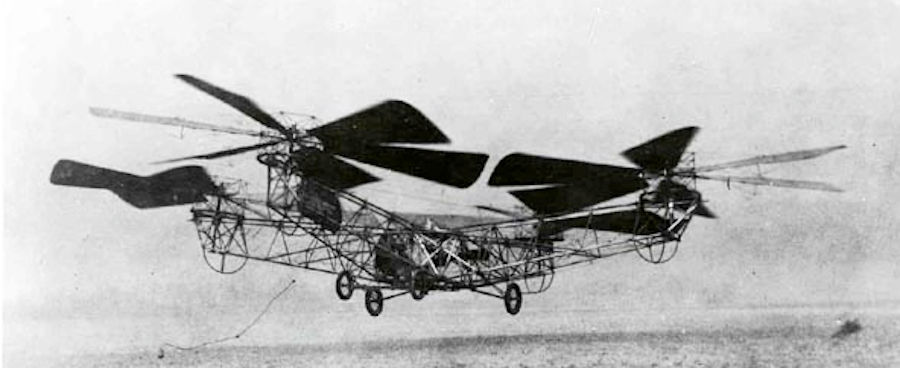
Figure 2: Quadcopter designed by George De Bothezat, making descent at McCook Field after remaining airborne for two minutes, 45 seconds. Picture from Edison National Historic Site archives.
What was the First Armed Drone?
The Hewitt-Sperry Automatic Airplane first appeared in World War 1 and was designed by Peter Hewitt and Elmer Sperry. It acted as an aerial torpedo also known as a flying bomb. It was the first pilotless aircraft capable of carrying an explosive device to its target. It is often considered to be the forerunner of the modern cruise missile.

Figure 3: Hewitt-Sperry Automatic Airplane in 1918. Picture from
The first military drone was launched in 1917 during World War 1 and known as the Ruston Proctor Aerial Target. It was the first unmanned, radio-controlled aircraft in history and based upon Nikola Tesla’s RC technology. It was designed to act as a flying bomb that could be safely piloted into enemy territory. Ultimately, it was never used in combat but led to the creation of The Kettering Bug to be used later in the war.
In World War 2, Reginald Denny created the very first remote controlled aircraft. It was called the Radioplane OQ-2 and was the first massed produced drone made in the United States. This was a major milestone in the manufacturing of drone for the military. A follow-up version called the Radioplane OQ-3 later became the most widely used drone in the history of the United States service. Over 9,400 were built during World War 2!
During the late 1930’s, the US Navy created the Curtiss N2C2-2 drone. It was revolutionary in its design and the benchmark for similar drones that the United States Army Air Force later used as target practice for its gunmen.
In 1940, the TDN-I drone was developed and used. It paved the way for ‘Project Fox’ in 1941, which led to the development of the Naval Aircraft Factory assault drone. It used an RCA television camera and screen mounted inside the TG-2 control aircraft. A milestone indeed for unmanned aerial vehicle assault weapon technology.
The first successfully armed and deployed military drone was created in 1943 by the German military. Known as the ‘Fritz X’, it was the first remote-controlled, unmanned weapon to actually be put into operational use. It carried a 2,300lb bomb that was used to sink ships during combat. It undoubtedly paved the way for modern anti-ship missiles and other precision-guided weapons used in modern military tactics.
Drones in WW1 and WW2
The first drones to be used in World War 1 were unmanned, remote-controlled aircrafts. One in particular known as The Kettering Bug, was an unpiloted biplane that flew over a target with a bomb attached on a pre-determined route. Set to autopilot, the aircraft was then ‘on its own’.
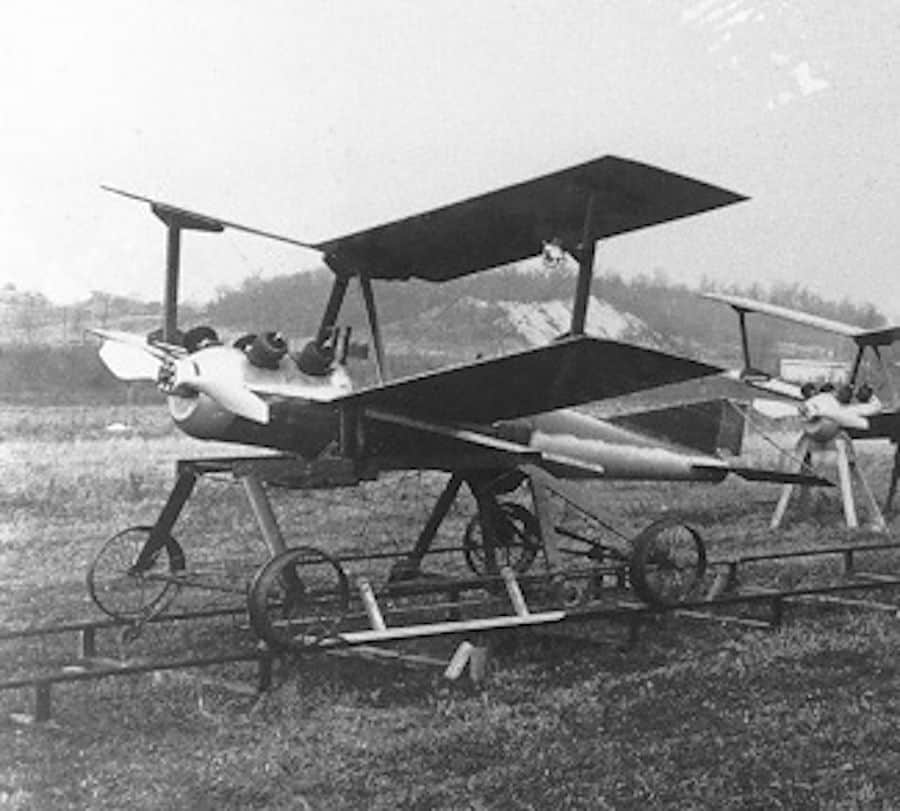
Figure 4: The Kettering Bug. Picture from Encyclopedia of Astrobiology, Astronomy, and Space Flight.
During this time, drone prototypes were successfully built and tested but by the time the ‘Bug’ made its first flight, the war was already over. Nonetheless, it marked the beginning of the modern cruise missile. Meanwhile, the creation of the military rocket had reached a high degree of perfection during the early 1900’s, not to mention being a more cost-effective way to successfully deliver an explosive payload!
When World War 2 broke out in the late 1930’s, drones were still quite primitive compared to the unmanned aerial vehicles of today. They were mostly used by the Navy for target practice. However, some of these aircrafts were designed with highly-futuristic technology and would ultimately pave the way for modern drone warfare. They were equipped with TV cameras that could relay images back to a central controller similar to those of present-day military drones.
Modern Military Drones (Uses and Classifications)
Military drones are currently used for a number of tactical purposes and are often categorized by weight, range, speed and capability. There are three main classifications used today by NATO troupes. These include the following:
Class 1 – Micro, Mini and Small Drones
These drones are used to provide Intelligence, Surveillance, Target Acquisition and Reconnaissance (or ISTAR). The fixed-wing FULMAR is an example of a class 1 drone and weighs about 20kg with a range of approximately 90km and endurance of around 12 hours. The top speed is 100km/hr with a maximum altitude of 4000m when carrying a payload of 8kg.
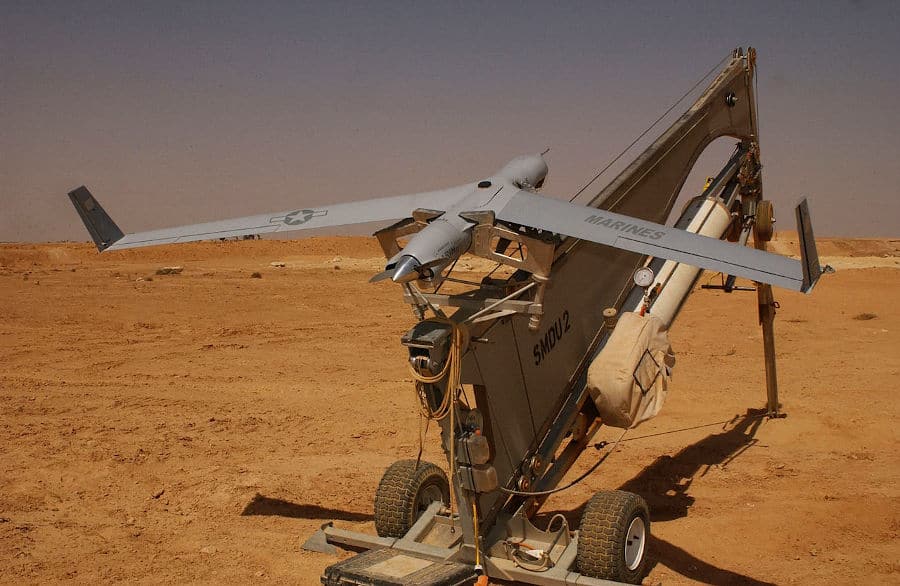
Figure 5: ScanEagle UAV on the catapult prior to launch. Picture from.
Class 2 – Medium Sized Drones
These drones are designed specifically for Special Forces to be used for medium range surveillance such as target acquisition and damage assessment. These drones are called MALE or HALE drones – that stand for Medium Altitude Long Endurance or High Altitude Long Endurance.
One drone in this class is the Heron made by Israeli Aerospace Industries. With 1000kg and a wingspan of 16 meters it has a flight time of 52 hours.
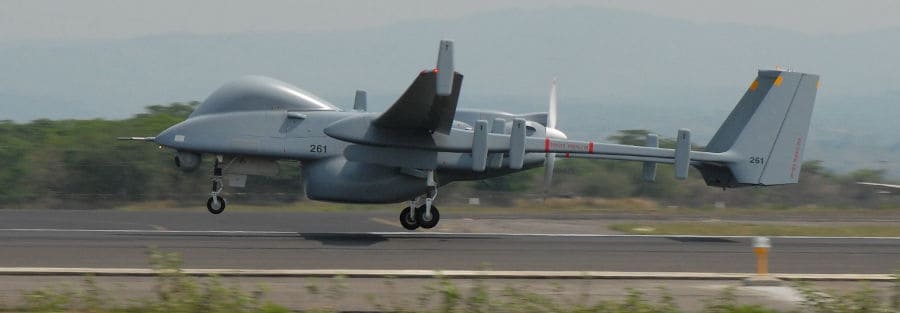
Figure 6: The Heron Unmanned Air Vehicle (UAV) takes off from the Comalapa airport runway Picture from.
Class 3 – Large combat drones
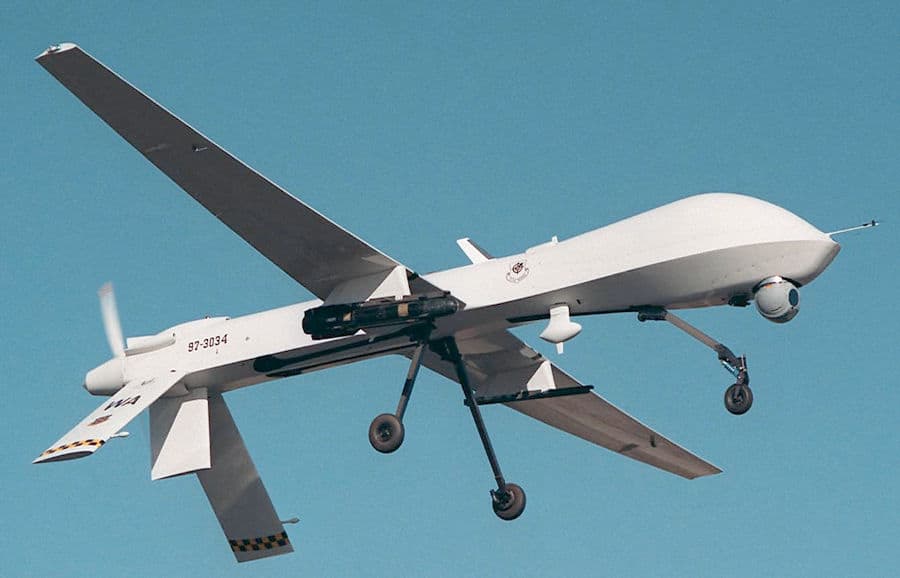
Figure 7: MQ-1 Predator armed with AGM-114 Hellfire missile. Picture from.
This class includes the biggest drones of the World. The most famous military drone is the MQ-1 Predator. Primary used by the United States Air Force and between 1995 and 2018 360 drones were built. Other drones of this class are the Reaper ore the Global Hawk.
These drones fly up to 18000 meters and are used for surveillance or they are armed with rockets and bombs. They use state-of-the-art technology to compile lists of targets while determining both enemy positions and human populations not involved in conflict.
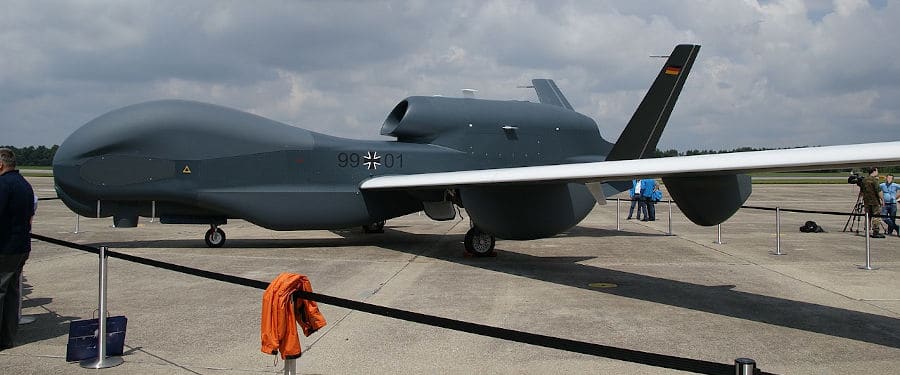
Figure 8: EuroHawk Surce Rekke. Picture from.
What was the First Country to Build a Military Drone?
The first country to build a military drone was Israel back in 1973. It developed and implemented drone technology following the Arab-Israeli war of 1973 after sustaining huge losses to its air force. The country is currently one of the top drone exporters in the world.
What was the First CIA Drone Attack?
In 2001, following the aftermath of 911, the CIA sent armed drones overseas to Afghanistan in the fight against the Taliban. The first American drone-based kill happened in February of 2002 when an unmanned aircraft called the Predator struck a large target thought to be the hiding place of Osama Bin Laden. It turned not to be, however, and an innocent man named Daraz Khan (out collecting scrap metal) was killed instead.
The Predator drone went on to change the character of war. Its advanced capabilities altered the military’s perception of drones, changed the way countries waged war and reshaped both the aviation and defense industries.
What is the Most Expensive Military Drone?
This year marked a milestone event when the biggest and most expensive military drone to date, the US Navy Global Hawk surveillance aircraft worth $150,000,000.00, was shot down by Iranian forces on June 20, 2019. It was the first time in history that this high-end spy drone has ever been taken down. It was one of 35 Hawk drones currently in use by the United States military.
Who Invented the First Drone Toy?
The first drone toy was invented by Etienne Omnichen back in 1920. It flew a distance of 360 meters and made over 1000 successfully recorded flights. It also paved the way for the Convertawings Model A quadcopter, designed by Dr, George E Bothezat in 1956. This model aircraft was the first 4-rotor design to successfully demonstrate forward flight motion.
What is the Parrot Drone?
In 2010, a French company known as Parrot released the very first Wi-Fi operated flying drone controlled using only a smartphone! It was well-received both critically and commercially and won the 2010 CES Innovation award for best Electronic Gaming Hardware. It sold over a half a million units following this acclamation.
What is the Lily Drone?
In 2015, the consumer drone industry experienced its biggest disappointment so far following the Lily drone disaster! With upwards of $34,000.000.00 in pre-sales, the original company ended up filing for bankruptcy and shutting down indefinitely after a series of delays and failed prototypes. This was a painful (and costly) lesson for drone enthusiasts at the time.
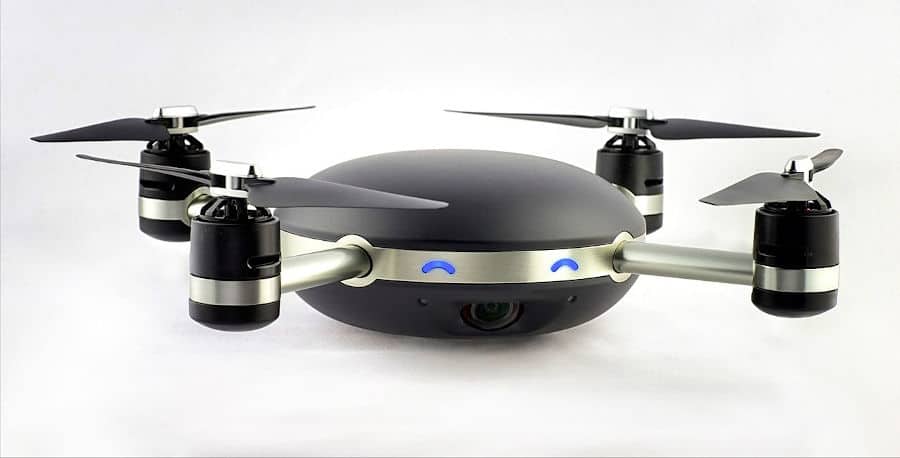
Figure 9: The Lily Camera. Picture from Katescarmitch
What is the Phantom 4 Drone?
In 2016, one of the best drone makers to date, DJI, introduced the Phantom 4, the first ‘smart’ computer drone with high-tech learning capabilities. It could avoid obstacles and intelligently track people, animals and objects using photographic imagery. Unlike other drones, it was not limited to a GPS signal which marked a major milestone for consumer drones in general.
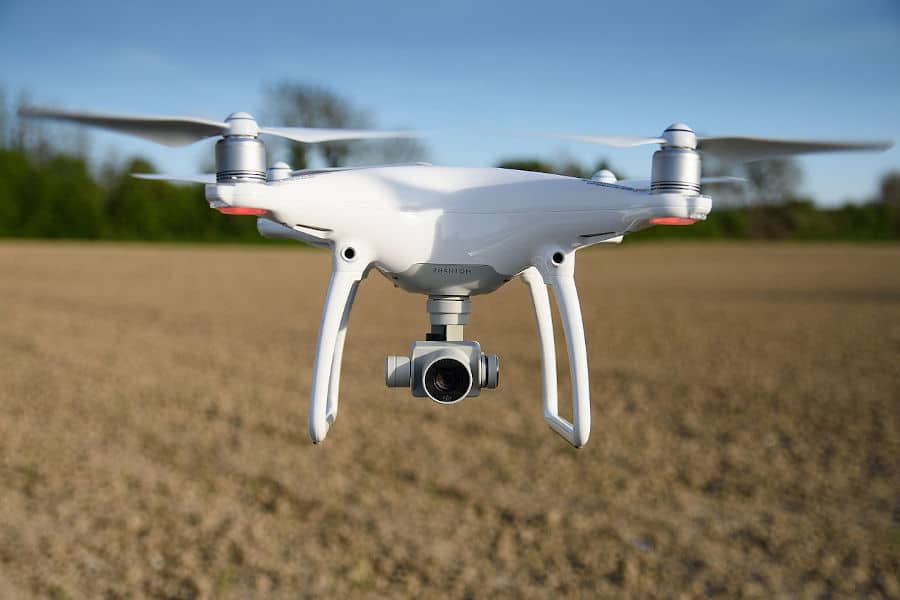
Figure 10: DJI Phantom 4. Picture from Volatus
What is the DroneBullet?
The DroneBullet is basically a hybrid aircraft that is part missile and part quadcopter. It is often referred to as a ‘kamikaze’ drone. It has a take-off weight of 910 grams and can reach speeds of up to 350 kilometers/hour. It can lock onto an enemy drone, pursue it and then crash into it! This unmanned aerial vehicle is currently revolutionizing the use of drones in the military.
What is a Drone Taxi?
A drone taxi is also known as a flying taxi, passenger drone or pilotless helicopter. It is type of unmanned aerial vehicle that carries human passengers from point A to point B. The first drone taxi was introduced in 2016 by Chinese entrepreneurs at the Consumer Electronics show.

Figure 11: Ehang184. Picture from Ben Smith
What is a Civil Drone?
Drones are most widely known for their military applications but they are currently making headway with a number of civilian uses as well. The top three include the following:
3-D Tracking
With their unsurpassed surveillance abilities, using drones to take digital images has the potential to revolutionize the way we piece together information to create modern 3-D maps. This technology is vital to military operations, commercial businesses and civilian districts alike.
Search and Rescue
Drones can be used to find lost or stranded victims in remote areas. By attaching heat-seeking equipment to the unmanned aerial vehicle, using drones for search and rescue missions has the potential to set milestone after milestone for safety and protection in many civilian sectors of society.
Storm Tracking
Using drones for hurricane research and tornado tracking can allow scientists to penetrate the eye of the storm and collect relevant data without risking human lives. Temperature, pressure, humidity and location can be determined while saving both lives and money in the process.
How are Drones Being Used in the Commercial Industry?

In 2006, the FAA recognized the potential for non-military drone applications and issued a non-consumer permit for the first commercial drone. This opened up a wide range of opportunities for professional who wanted to use drones to advance their companies in a variety of business ventures.
Today, civil drones are being used in a number of different commercial industries for an assortment of reasons. The businesses currently benefiting from advancing drone technology include:
Agriculture
Milestones currently being set by using drones in agriculture include their ability to take inventory of crops, mapping farmland and irrigation systems, identifying crop failures in the early stages, spraying pesticides and fertilizers and monitoring livestock populations.
Architecture
Drones are advancing architectural developments at a rapid rate with their ability to take images of various buildings in order to create 3D replicas of their structures in order to duplicate them.
Construction
A current milestone being set by drone use in construction includes the ability to quickly and affordably survey areas under development to see how the buildings and properties are progressing.
Delivery Services
Drone-based delivery services are making headway currently with the promise of goods being delivered right to your front door (especially in areas where road travel is difficult) in the near future.
Emergency Services
New and exciting opportunities lie ahead for drone usage in emergency services, particularly when it comes to delivering medical supplies to stranded victims in life-threatening situations.
Engineering
Milestones in drone usage for engineering purposes are tied directly to their ability to quickly and efficiently survey possible areas for road construction, airport establishment and infrastructure development.
Environmental Conservation
Drone-based conservation is making headway with its ability to monitor ecological environments including migration tracking, habitat management and flood assessment.
Film Production
Drone usage in movie production is currently revolutionizing the film industry with its ability to capture aerial images and action shots both swiftly and accurately.
Media
Milestones in drone-based media coverage are currently being set with local journalists now being able to capture aerial news footage previously reserved for larger outlets with access to helicopters.
Transportation
Drone use in transportation is gaining ground today because of the aircraft’s ability to maneuver above and around often inaccessible areas such as warehouses, shipping containers and terminals.
It is worth mentioning at this point that back in December of 2013, Amazon released a video showcasing its CEO’s dream of a future worldwide drone-based delivery system. While Jeff Bezos and his multi-billion dollar company was not the first to conceive of this idea, Amazon was indeed the one to bring it to the public’s attention. In an interview on 60 Minutes, Bezos described the technology as being possible within 5 years!
Wireless Internet Access
Using drones for internet connectivity is currently being explored by Facebook CEO Mark Zuckerburg in the hopes of bringing internet access to the developing world.
How are Drones Being Used in the Recreational Industry?
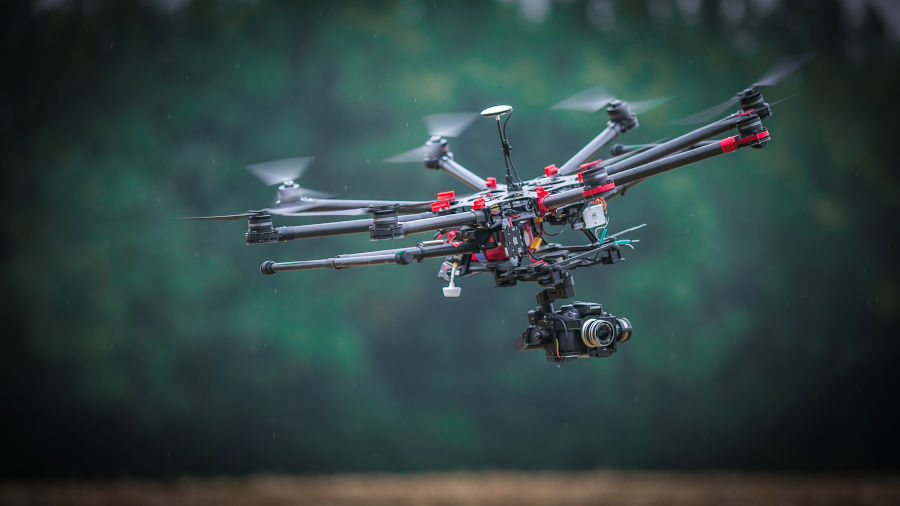
Drones are currently revolutionizing the recreational industry with its rapidly evolving technology. However, FAA regulations restrict drones for personal or hobby use to a maximum weight of 55lbs. The ways in which drones are being used for personal enjoyment include the following:
Aerial Photography
One of the innovative recreational uses for drones is aerial photography which uses high-flying camera drones to capture unique and stunning viewpoints.
Amateur Film-Making
Drones are revolutionizing the amateur film-making industry with low-budget producers and directors creating truly amazing material without spending having to spend thousands of dollars.
Hobby Flying
Drones are being used by people around the world for the sheer speed, thrill and excitement of flying an unmanned aerial vehicle.
Light Shows
Drone light shows, with their innovative technology, are replacing fireworks as the latest and greatest form of evening, party and holiday entertainment.
Skill Development
A milestone in aerial skill development, drones are currently being used to practice roll, pitch, yaw, throttle, hovering, sliding and other pilot maneuvers.
What are the Most Innovative Drone Companies?
Top drone companies to have set and likely continue setting milestones in the future include the following:
Autel Robotics
This Chinese company operates out of Washington State and is a current leader in drone technology. It is responsible for the creation of the EVO done, a folding, portable UAV with a stabilized camera that can reach speeds of up to 44mph! Watch for this innovative company to take the drone world by storm in the near future!
DJI
The innovative company behind the Phantom 4, DJI is undoubtedly a contender in the drone industry. It was founded by Frank Wang in 2006 a manufacturers a wide range of UAV’s as well as flying platforms, flight controllers, multi-rotors, helicopter parts and handheld aerial gimbals.
Intel
A leader in innovation, Intel is taking the world by storm with its amazing drone light show displays. Responsible for the ‘Shooting Star’ drone, this company is laying the groundwork for an entirely new form of ‘firework’ entertainment.
Parrot
This French company is known primarily for its flagship product called the Bebop which can fly at high altitudes for over 25 minutes! It was established in 1994 in Paris and is paving the way for drone usage in the automotive and civil markets.
Yuneec
This company started out as a manufacturing company for model-making remote-controlled aircrafts. It was founded in Hong Kong in 1999 and set a milestone with the E-Spyder which received the world’s very first certification for an electrically-powered aircraft. It was also the first company to create the first ready-to-fly straight out-of-the box drone, the Typhoon Q-500.
Conclusion
In conclusion, the history of drones is an exciting one, dating back to its creation in 1907 and its inception in World War 1 and 2. With the help of modern technology, drones have advanced quickly, setting milestones along the way. They are primarily used for military operations but are currently making headway in both the commercial and recreational industry as well civil sectors in society.
There are many drone companies that have (and continue to) set milestones including Autel Robotics, DJI, Intel, Parrot and Yuneec. Keep an eye out for the newest and lasted innovative drone models from these well-known manufactures.
Drone use in society today seems inevitable as result of the many milestones that have paved the way. As drone technology continues to advance, these aircrafts get smaller, lighter, faster and quieter with stronger batteries, improved fuel efficiency and flight times and better optic capabilities. The future seems bright indeed for these unmanned aerial vehicles. Stay tuned for more!
